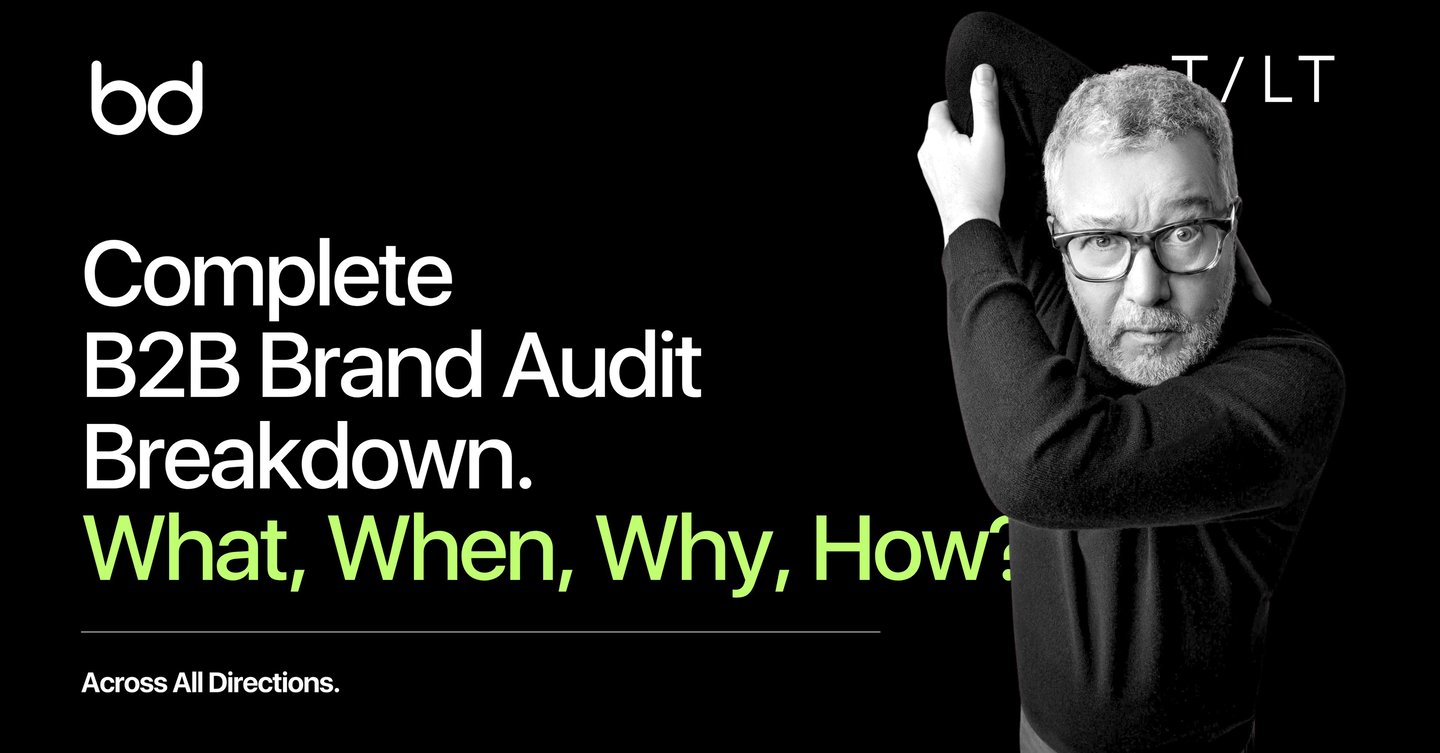Complete B2B Brand Audit Breakdown: What, When, Why & How
You might have a solid product, a growing team, and strong traction. But if your brand still communicates like it did on day one, it’s likely not supporting your momentum. That’s when a brand audit stops being optional and starts becoming essential.
Brand Blinks Global
7 min read
You might have a solid product, a growing team, and strong traction. But if your brand still communicates like it did on day one, it’s likely not supporting your momentum. That’s when a brand audit stops being optional and starts becoming essential.
A brand audit reveals how it lives in the minds of your customers, your competitors, and even your team.
This directory walks you through everything: what a brand audit is, why it matters, when you need one, and how to run it step-by-step, especially for B2B businesses ready to scale with confidence.
"Your brand is what other people say about you when you’re not in the room."
— Jeff Bezos, Founder of @Amazon
What is a Brand Audit?
A brand audit is a complete evaluation of how your brand is performing, visually, verbally, and experientially.
It answers critical questions:
+ Do people understand what we do?
+ Do we look and sound like the brand we say we are?
+ Is there consistency across touchpoints?
+ Do internal teams present the brand with the same clarity?
It’s more than a logo or tagline check. It’s a deep dive into how your brand shows up in the market, how it’s perceived by customers, and whether it’s aligned with your business goals.
Why B2B Brands Struggle with Brand Clarity
Unlike B2C, where branding often plays to emotion and impulse, B2B branding must communicate trust, logic, and long-term value all in one go.
The problem is:
+ Buyers often deal with multiple stakeholders
+ Sales cycles are longer and involve more research
+ Misalignment in messaging or tone can create doubt
Many B2B companies struggle because their messaging is outdated, their visual identity hasn’t evolved with their business, or their teams aren’t aligned on how to talk about the brand.
When Do You Need a Brand Audit?
If any of the following sound familiar, it’s time:
+ Your brand still reflects your early startup phase
+ Your competitors have clearer positioning than you
+ Customers describe you differently from how you describe yourself
+ Your website, emails, and decks all look like they’re from different companies
+ Teams inside your company explain the brand in different ways
+ You’re about to scale, raise funding, or enter a new market
These affect how you attract, convert, and retain customers.
Benefits of Running a Brand Audit
A brand audit isn’t just about fixing what’s broken. It's about sharpening your presence and giving your brand structure and strength.
Here’s what a well-done audit can do:
+ Align internal teams with a unified brand story
+ Improve the performance of marketing and sales materials
+ Make messaging more relevant to your current market
+ Help leadership clarify what the brand truly stands for
+ Set the foundation for a strong customer experience
The Rising Popularity of Brand Audits: Recent Insights
To understand why brand audits matter more than ever, consider recent findings:
+ Rebranding & Audit Spend Trends
A 2024 Forbes report noted that companies allocate between 5–10% of their overall marketing budget to branding and rebranding efforts, including audits indicating how seriously this process is taken.
Additionally, 74% of S&P 100 companies undergo rebranding or major brand refresh efforts within their first seven years, a clear sign that established businesses recognise audits as critical to staying relevant forbes.com.
+ Brand Audits Boost Loyalty
A 2023 report from consulting firm McKinsey found that firms conducting regular brand reviews and adjusting their strategies accordingly saw a 23% increase in customer loyalty.
+ Consistency Drives Revenue
Research by Lucidpress shows that brands maintaining consistent messaging and visuals, often an outcome of audits, achieve up to 33% higher revenue performance.
These figures tell a powerful story: brand audits aren’t optional; they’re strategic investments. Forward-thinking companies, whether startups in growth mode or global brands in reinvention, leverage audits to sharpen their message, reset positioning, and reinforce trust.
Common Mistakes Found in Brand Audits
Even the most experienced teams can misstep during a brand audit. Here are the most common pitfalls:
1. Focusing Too Much on Visuals
A logo refresh doesn’t solve unclear messaging. A strong brand starts with clarity of thought, not just a new typeface.
2. Skipping Internal Interviews
Brands often audit external assets but forget to interview the people representing the brand's daily sales, product, and customer success teams.
3. Not Benchmarking Competitors
Without understanding your market, your improvements lack context. Competitor benchmarking helps you define both white space and differentiation.
4. Fixing Surface-Level Symptoms
A messaging inconsistency might point to deeper positioning flaws. Audits should uncover root causes, not just patch cosmetic gaps.
5. Lack of Prioritisation
When everything feels broken, teams try to fix everything at once. A good audit prioritises what truly moves the brand forward.
Types of Brand Audits
Not every audit needs to be full-scale. Sometimes, a focused audit can solve the real problem.
1. Visual Identity Audit
Reviews the consistency of design assets, logo, colour palette, typography, decks, social templates, etc.
2. Messaging & Communication Audit
Looks at website copy, email templates, product descriptions, pitch decks, and more to ensure tone and clarity.
3. Customer Perception Audit
Uses customer feedback, reviews, and interviews to understand how your brand is perceived.
4. Digital Presence Audit
Evaluates your performance across your website, email, and social channels to assess experience quality.
5. Internal Alignment Audit
Interview your team to uncover internal inconsistencies in how the brand is described or delivered.
Expanded Dimensions of a Brand Audit
1. Brand Culture Audit
Ask: Do our teams believe in what we say externally?
An audit should assess whether employees understand the mission, can explain the brand clearly, and align with its tone and purpose. Misalignment internally is the root of misalignment externally.
2. Brand Architecture Audit
Do your products and services make sense under one brand?
If you offer multiple offerings, check for clarity in how they’re presented, named, and positioned under your master brand. Confusion here creates friction in buying decisions.
3. Touchpoint Consistency Audit
Customers interact with you in multiple places: LinkedIn, your website, a Zoom call, and even a proposal deck. Do all those touchpoints tell the same story? Are the visuals and tone consistent?
A brand audit should follow a full journey and evaluate how consistent that experience is.
4. Voice & Tone Audit Across Funnel
A consistent tone builds familiarity and trust. Your blog, social posts, emails, decks, and chatbot should all “feel” like they come from the same brand, even when written by different people.
Your audit should identify places where the tone goes off-brand or becomes too technical, robotic, or generic.
5. Business Growth & Brand Readiness
A strong brand creates momentum. When aligned, your brand makes launches easier, sales smoother, hiring more efficient, and partnerships more appealing.
An audit should evaluate: Is our current brand holding us back from the next stage of growth?
How A Brand Audit Happens
Step 1: Internal Discovery
Gather key documents: value proposition, decks, brand guides, emails, campaigns, etc. Interview team members to understand how each describes the brand.
Step 2: Messaging Review
Check if the brand speaks clearly and confidently. Does the messaging align with business goals? Is the language outcome-driven?
Step 3: Visual Consistency Review
Review all brand visuals across touchpoints. Are they cohesive and modern? Are outdated formats or styles still in use?
Step 4: Customer Touchpoint Review
Audit every place a customer interacts with your brand from inquiry to onboarding. Are they aligned?
Step 5: Competitive Benchmarking
Compare the messaging, tone, design, and positioning of 3–5 key competitors. Look for gaps or opportunities to differentiate.
Step 6: Synthesis & Action Plan
Create a report summarising what’s aligned, what’s inconsistent, and what needs updating, along with a priority action list.
Brand Audit Checklist
Area: Questions to Ask
+ Positioning: Are we differentiated from competitors?
+ Messaging: Is our voice consistent and confident?
+ Visual Identity: Are all assets unified across platforms?
+ Internal Alignment: Do teams describe the brand in the same way?
+ Customer Experience: Do customers encounter a consistent experience?
+ Brand Architecture: Is it clear how our offerings fit together?
Signs Your Brand is Out of Sync
Not sure whether you need a brand audit? Answer these 10 quick questions for yourself:
+ Do different departments describe your company differently?
+ Has your visual identity remained unchanged for over 5 years?
+ Do new hires struggle to understand your brand voice or story?
+ Do you find that your sales and marketing materials feel mismatched?
+ Is your website out of sync with your current product or service?
+ Have customers misinterpreted what your company does?
+ Are competitors positioning themselves more clearly?
+ Do you struggle to explain what makes your brand different?
+ Does your team rely on old presentations or outdated assets?
+ Do customers “get it” only after a long explanation?
Score Interpretation:
1–3 Yes: You’re mostly aligned: conduct a review bi-yearly.
4–6 Yes: You likely need a focused brand audit.
7–10 Yes: High misalignment, start your audit process now.
The Cost of NOT Doing a Brand Audit
+ Lost deals due to unclear messaging
+ Lower team morale
+ Brand dilution through inconsistent visuals
+ Wasted marketing spend on misaligned campaigns
You can even estimate an “invisible cost” formula:
If your conversion rate drops by just 1% due to brand confusion, what’s the lost revenue over a year?
Real Brand Audit Examples
+ Dropbox (2017 Repositioning)
Dropbox realised it was being perceived merely as a cloud storage tool, while internally, it had evolved into a platform for creative collaboration. A brand audit uncovered this gap between internal vision and external perception.
Result: Dropbox refreshed its brand identity, messaging, and visual language to match its new purpose, leading to a more aligned and premium presence in the market.
+ Mailchimp (2018 Brand Evolution)
Mailchimp’s brand audit revealed that while its product evolved into a full marketing automation suite, customers still saw it as “just an email tool.”
Result: They overhauled messaging, introduced new product architecture, and leaned into a quirky but confident tone. Their growth accelerated, and perception changed almost overnight.
What Happens After the Audit?
Your audit findings should lead to:
+ Updated brand guidelines
+ Clear, aligned messaging across all platforms
+ Refreshed pitch decks and proposals
+ Consistent customer experience flows
+ Training sessions for internal teams
+ An ongoing review process every 12–18 months
How Brand Blinks Global Helps in the Brand Audit Process
At Brand Blinks, we help ambitious B2B companies sharpen their brand with a strategy-first approach.
Here’s how we support:
+ Discovery Calls with your leadership and functional teams
+ Audit Reports covering visuals, messaging, voice, team alignment, and customer perception
+ Competitor Positioning Maps to find white space
+ Custom Action Roadmaps with priority fixes
+ Post-Audit Implementation for content, design, or campaign changes
Whether you're preparing to scale or reposition, Brand Blinks Global ensures your brand is future-ready.
Frequently Asked Questions
Q1. Is a brand audit the same as a rebrand?
No. A brand audit tells you if you need a rebrand. Sometimes all you need is realignment, not a complete overhaul.
Q2. How often should I do a brand audit?
Every 6 to 12 months, or after a big change, like entering a new market, launching a new product, or reworking your pricing model.
Q3. Can I do it internally, or should I hire experts?
You can start internally. But external experts bring objectivity, better tools, and broader industry benchmarks.
Q4. What’s the first thing to fix after an audit?
Start with your messaging. If your brand doesn’t speak clearly, design won’t matter.
Q5. How long does it take?
Anywhere from 1-3 weeks, depending on how deep you want to go.
To define brand audit simply, it’s a strategic check-up of how your brand is seen, heard, and felt by your audience and team. Done right, it corrects inconsistencies and unlocks future growth.
If your B2B brand feels misaligned or hard to explain, a brand audit might be the best next move.
Want to get started? Let Brand Blinks Global walk you through it with clarity, precision, and purpose.


















© 2025 BRNDXMORPH Media Worldwide Private Limited. All rights reserved
Brand Blinks Global is an independent global brand consulting x transformation company.
The trademarks, logos, and service marks displayed on this site are the property of their respective owners.
"Brand Blinks Global," "Brand Blinks," "Made for the Uncommon," and the "bd" logo are trademarks or registered trademarks of BRNDXMORPH Media Worldwide Private Limited.
RESOURCES
INTELLIGENCE
BUSINESS
PARTNERSHIPS
COVERAGE
EXPLORE
Made for the Uncommon


When your brand grows, others rise too. 2% of your project empowers a nonprofit we back together every year.


